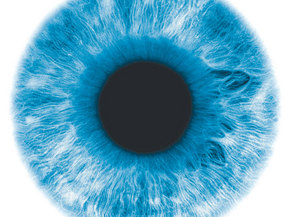A Vision for Curing Blindness Counts on Congressional Action
 Co-authoerd by Congressman Sanford Bishop
Co-authoerd by Congressman Sanford Bishop
An advocate who is blind recently came to us and pointedly told us, “I believe I will be able to see in 10 years if we can bridge the ‘Valley of Death.’” The Valley of Death she was referring to is a term often used to reference top-quality scientific research that stalls and never gets to patients due to a lack of funding.
As members of Congress, we are accustomed to hearing a lot of rhetoric, but one doesn’t easily forget such a powerful statement.
Today we are both proud to introduce a bill that we believe has enormous promise for Americans who are blind and, in the future, for those who suffer from other diseases. The Faster Treatments and Cures for Eye Diseases Act is a bipartisan bill that would fund translational research and advance treatments and cures for blindness and other causes of severe vision impairment.
When enacted, this legislation will offer an innovative way for overcoming the Valley of Death the medical community and patients know too well.
In this valley, completed medical research projects, mostly funded by the National Eye Institute and private foundations, that have been shown to be effective, stall on their way to clinical trials which are needed before patients can benefit.
In this so-called valley, these potential cures for people with vision-related diseases sit abandoned without the financial backing to take them to the next level. Venture-capital firms and other early-stage investors fund only a fraction of promising therapies at the translational research juncture, leaving a lot of great research unfunded.
We are joined as original co-sponsors by Rep. Fred Upton (R-Mich.) and Gus Bilirakis (R-Fla.) in proposing what we are calling Eye-Bonds to tackle this problem.
These bonds, a key part of the legislation, would finance packages of loans that would altogether total $1 billion for new projects over four years in the pilot phase. Underwriters would determine how many multiple projects they would fund and at what amount, but not to exceed $250 million in any year.
In the U.S. there are more than 4 million adults and almost half-a-million children who are blind or have severely impaired vision. Eye-Bonds would advance treatments and cures for age-related macular degeneration, diabetic retinopathy and many causes of childhood vision loss. Eye-Bonds would also mobilize funds for the severe vision trauma that is sadly one of the most common injuries suffered by our warriors in Iraq, Afghanistan, and other war zones.
This bill is also essential for those who suffer from glaucoma, which disproportionately affects African Americans, as does sickle-cell anemia retinopathy.
We believe the independent Congressional Budget Office will score the cost of the legislation at or near zero. That’s because the federal treasury — the taxpayers — would be the first to be repaid when private investors recoup their investments.
The National Eye Institute, part of the National Institutes of Health (NIH), would investigate and evaluate programs eligible for funding, so they will be well vetted. NIH would have no risk related to funding these projects.
We believe these innovative bonds will prove successful and then will be used to overcome the Valley of Death that also exists in cancer, Alzheimer’s, Parkinson’s research and many others. Now is the time for America to step up and lead.
Eye-Bonds legislation has the support of the Foundation Fighting Blindness, National Alliance for Eye and Vision Research, and Blinded Veterans of America.
There are times when the private sector needs to work with the public sector in making advancements — this is one such time.



